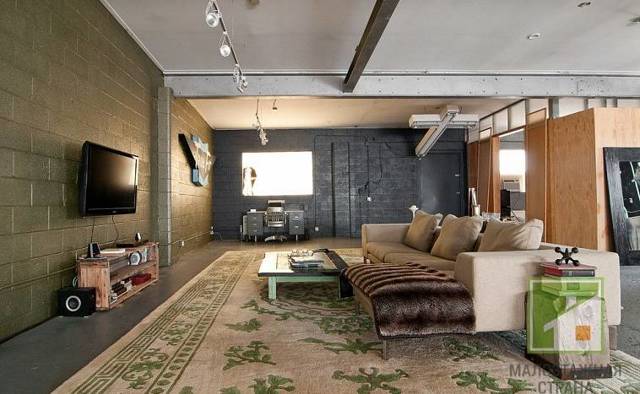
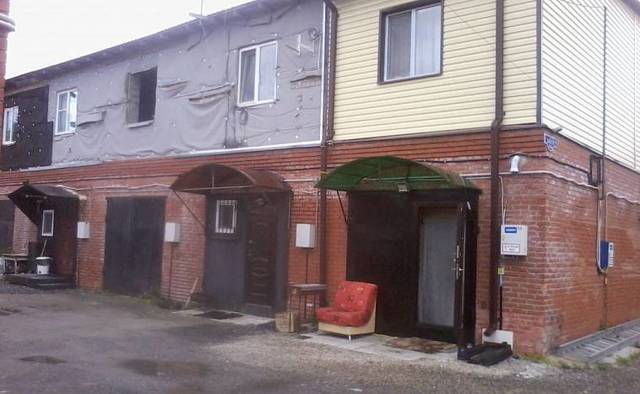
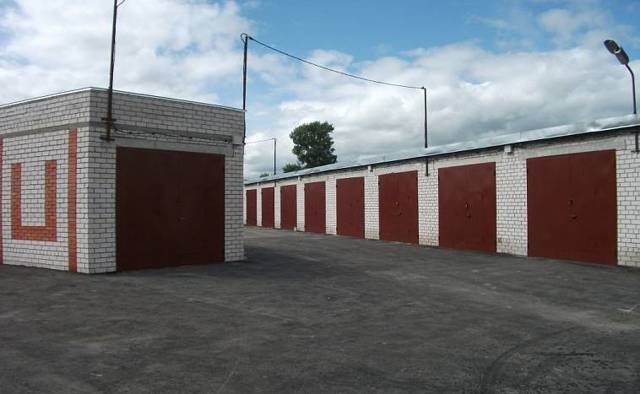
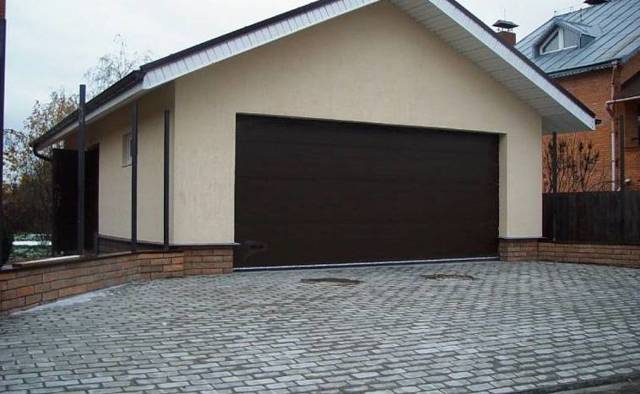
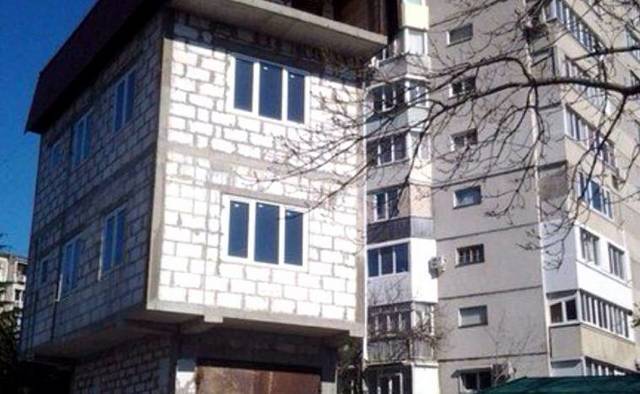

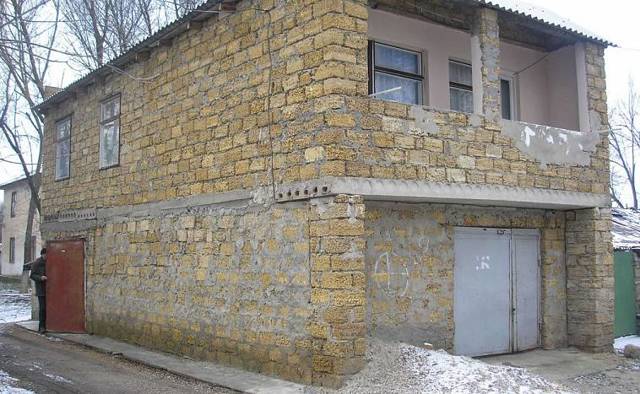
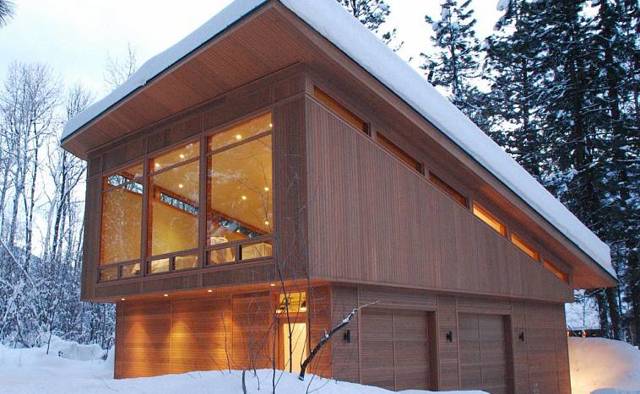
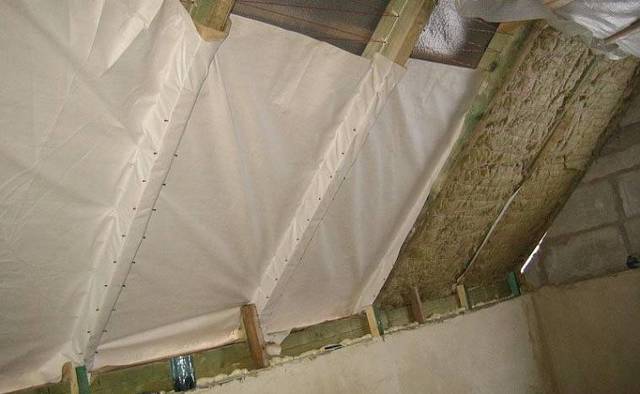
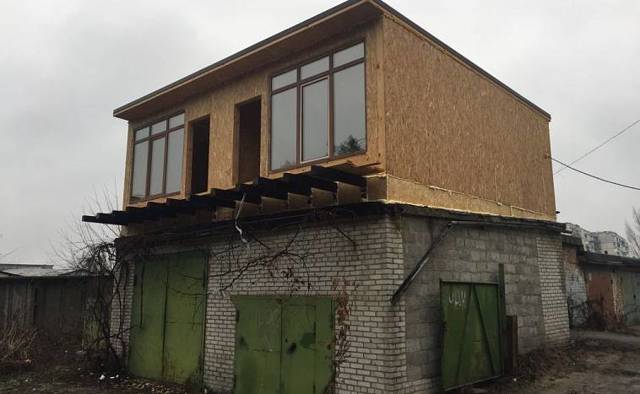
Living garages are a kind of real estate that has been in demand for many years, so many people solve the problem of residential square meters without buying or renting an apartment or a private house, but as much as it's legitimate to use a regular garage as a living place, let's deal with garages, how they can be made residential, what's necessary and whether it's legal.
Living space above the garage
Types of garages
To begin with, there are two types of garage property:
-
Construction in the Garage and Construction Cooperative (SGC).
-
A separate building, a so-called individual building.
The first option is considered safe in that it is difficult to bring down because the cooperative acquires the land as its property or the municipality rents it for a specified period of time, which has been shown to be extended at all times.
Whoever buys a co-operative garage, he immediately buys from the old owner a pi in a garage cooperative, which means he becomes a member, and usually the buyer makes a contribution to the cooperative community's cash register, and he gets the entire package of documents in return.
- A certificate of registration of ownership of acquired real property;
- Technical passport of construction;
- The cadastral passport.
If the land was purchased by the cooperative, the new garage owner also receives a certificate of registration of ownership of the plot under the garage.
Garage in the garage and construction cooperative
But many buyers often face manipulations, most of which concern the cooperative itself, so it is important to look at the documents that determine the status of the organization.
So the co-operative must have a municipal decision that he gave the co-operative a plot of land where the garages were built, as well as a charter of the organization and a list of its members.
And it is imperative that the new owner of the building receive a membership book, signed by the chairman and stamped.
Now, as far as individual construction is concerned, you can't buy a garage unless the owner can provide a certificate of registration of the garage itself and the land on which it is built, as well as a technical and cadastral passport, without which the notary can even make a sale.
So, if all the documents are okay, then the garage can be purchased, and now you can handle moving the garage into a house.
A separate garage on our website can be accessed by construction companies that offer services for the construction of small architectural forms. Direct contact with representatives can be found at the Small-Storey Country House Exhibition.
Garage transfer to housing
On the purely legal side, it is not all that simple. In order to make a translation, you need to read the section entitled "permissible use", which is on the land ownership certificate.
If it is stated that buildings can be built as accommodation in the allocated area, there is no problem with moving the garage to the accommodation; if there is no such mark, the entire documentation will have to be changed; or, more specifically, the municipality will have to issue an application to allow the construction of the dwelling.
Let's be honest, it's a rough road and a long way to go, and as practice shows, it's stuck in a bureaucratic machine that's hard to break.
So let's assume there's a permit mark on the certificate, so it allows you to build a few spaces over or near the garage that can be used for housing.
But construction in the same municipality will have to be allowed to build, and if so, we can start building upstairs.
By the way, their numbers are all in the same section, the type of authorized use.
The number of floors above the garage is determined by the land ownership certificate
Can you sign in the garage?
The question posed by the section of this article is very relevant; the answer is clear – you can write it down, but there are a number of conditions:
- The garage has to berecognized as a residentA room;
- In order for this to happen, it is necessary that the construction be fully compliant with the requirementsHealth and epidemiological standards;
- Which means it has to contain everything.Engineering networks:: Water supply, sanitation, electricity, heating system, gas supply, etc.
And even if all these networks are in the garage, it is necessary to obtain a certificate from each service to which communications relate that the networks are available and functioning correctly, and then to submit to the city or district administration an application and a package of documents which includes:
- plana garage with a technical description of the facility;
- projectRefurbishment;
- all law-makingdocumentsusually copies that confirm that you are the immediate owner of the garage, they will have to be certified by the notary.
Collection and transmission of documentsThis could be interesting!In the article on the following link, read about the rules for building the foundations for the garage.
Once the application and the package are filed, the answer must be given in a week, which is rare today, but if that happens, you can go to court and solve your problems there. There's no other way.
So, if you get a permit, you can move on to remodeling, and then you can sign in the garage after you've finished and become a living room.
Options for the superstructure of the garage
Changing the garage into a living room is the most common way to build a second floor. There are many options here, how to do it correctly. Consider some of them.
Option 1
The garage is usually a block or brick structure with a strong foundation. There's no problem here, you can build a second floor simply by dismantling the roof structure, leaving the closure and lifting the walls from the same material as the garage itself, and building a roof of a new house over the second floor.
The simplest thing is, if the garage is covered with a flat roof, it doesn't even need to be dismantled, usually the roof is either a reinforced block board, or a monolithic filler with an arming frame inside.
Block superstructure over the stone garageThis could be interesting!In the article on the following link, read about the technology used to build a metal garage.
The walls are raised, the upper walls are formed. This may be the same stove or a built-up structure on the bearing beams. The second option is easier to load on the foundation. It is usually considered if the main structure of the garage is not so powerful as to withstand large amounts of iron concrete.
The cover between the first and second floors is necessarily warmed up with parallel construction of the floor of the living room, usually the lags which are attached to the concrete plane, between which the thermal insulation material is laid, e.g. keramzite or mineral plates, followed by the installation of a hydro-insulation membrane on top of which the floor is formed (mass variation).
It is mandatory to warm the roof and close it between the second floor and the attic. If the garage with the accommodation is covered with a flat roof, the thermal insulation shall be placed on top of the roof structure.
In the video, the garage owner talks about his plans to build a second floor of brick that can be used for an office and a resting place:
Option 2
This design is much cheaper than the previous one, because it's a garage with a mansard roof, which means that a roof with an attic is built over the garage building, and then it's converted into a living room.
There's no limit to what type of roof would be remodeled, so whether it's one-, two-scaling or some other kind of roof, and the picture below shows the option of a single-scaling roof structure.
Although it's more of an exception than a rule, because it's traditionally organized under two-square designs.
Mansarda over the garage under the single-scenes roof
Imagine a garage with an already finished rolling roof. If there's enough space under it, there's no obstacle to setting up a house under the roof. The blood structure just needs to be warmed up using standard technology. Here's a sequence of construction operations:
- A password-insulation film shall be stacked from the inside of the strips;
- The sloppy legs are then placed together with a heater, such as mineral stoves;
- The latter cover the waterproofing membrane;
- At the end of the session, the board or panel materials, such as plywood, CPDs, SWAps, hipsockarton, etc., are finished.
How the roof is warmed up over the garageThis could be interesting!In the article on the following link, read the garage and bath under one roof — features and examples of projects.
If the roofing structure is low, it will have to be converted to building standards.
In fact, we're gonna have to renovate the roof with the complete dismantling of the roofing material, the stripping system, and other elements, but it's easier and cheaper than building a new mansard roof.
'Cause after the roofing, there's almost all the sawnwood that can be used to build a new roof, and that's a lot of savings.
The most expensive way to build a mansard roof is when the roof of the garage is flat.
It will require the installation of a roofing facility, which will require the purchase of all the necessary building materials, such as a stripper, crate elements, maerlata bars, thermal insulation pie materials, roofing material and fastenings, but even it is easier and cheaper than using the first construction option.
The video shows the idea of building a living space in an attic space above the garage:
Option 3
You can build a frame over the garage, regardless of the material from which the garage itself was built.
And then they put the maerlat on the perimeter of the block, which is a 150x150 mm minimum line, and they're bound together, and they're basically gonna serve as the base of the framework structure, and they're gonna have the maerlat to the walls of the garage with metal enclaves.
A standard frame structure consisting of 100 x 100 mm support pillars shall then be constructed and placed at the corners of the new space and between them over the walls with a step of 1 to 1.5 m. The pillars to the maerlata shall be fitted with steel corners and self-cuts.
The upper bandage is then mounted. This is still the same maerlat, only the elements of which are placed at the top of the support pillars. For this purpose, 100 x 100 mm strings are used. The attachment is carried out with the same products as the lower bandage. The roof is then formed: one or two steps. Rarely, the other option is chosen.
Carcass superstructure over the brick garageThis could be interesting!In the article on the following link, read about the main fears about houses from the SIP panels — the mythology of construction
When the framework is ready, it is sewn from the outside by a water resistant plywood or SWAps plate. Inside, the heater is placed and the same plywood sheets or SWAps are sewn with panels. Next, the roof is cooled and roofed. At the end, the ceiling and floors are formed and warmed. The windows and doors are installed, and communications are conducted.
In the video, a specialist talks about the technology of building a framework superstructure over a brick building:
Option No. 4
It's the easiest way to do this. It's based on its rejection of the garage as a vehicle maintenance facility. So inside the garage building, there's a place to live, nothing to be built, nothing to be built, nothing to be built. It's just a major renovation of the garage with a communication network.
If necessary, you can divide the space into a partition or create an area by other means, and the benefits exist and are used actively by designers. The photo below shows how you have managed to organize the living space properly inside the garage. A comfortable and beautiful environment, accurately embedded in the space of soft furniture and other accessories.
The living room after the renovation of the garageThis could be interesting!In the article on the following link, read about a house with a veranda.
Conclusion on the topic
As you can see, moving the garage into a living room today is not a problem. The important thing is to get permission from the authorities to do so and to create all the necessary favourable living conditions in it. But which option you choose depends on many conditions, where one of the important ones is the financing allocated for the refurbishment.
Read later
We'll send it to the post office.
- Author of article
- Landscape designer, site design and management
- Elena Shevchenko
Relocation of non-residential premises

How can you make a dwelling out of a non-residential place? This simple question can sometimes cause a lot of debate and time to process the necessary documentation. In this article, let us consider in detail the procedure for moving the non-residential dwelling into a residential building and why we should do so at all.
Dear readers!Our articles describe model ways of dealing with legal issues, but each case is unique.
If you want to know,How to solve your problem is how to use the form of an online consultant on the right.
It's quick and free!Or give us a call.Tel. 8 (800)-350-30-02 (free call for all regions of Russia)!
The answer is obvious: sometimes a man owns a warehouse, an attic, or an abandoned plant, and it would seem that a room like this could be a heavy burden, but no, and by converting it into a residential building, you can not only settle in it on your own, but you can rent it out or make it a cozy loft.
It's worth knowing that until you get all the paperwork you need, remodel it, repair it, and move a non-residential building into a residential building, living in it is absolutely forbidden by law.That's why it's worth trying to deal with the difficulties as quickly as possible, especially since the lawyers on the site are ready to come to you for help at any time of the day or night.
It is only after a number of requirements and conditions that the non-residential accommodation can be moved to a residential home.
According to article 9 of the Housing Code, it is possible to make such a transfer of the status of the dwelling, provided that the owner of the property wishes to do so; another condition is that the co-owners, if they have one, will write about it and assure the notary of it.
The non-residential premises shall not be on bail.
If the owner of the premises purchased it on credit, the loan should be repaid first and the transfer should be made after the transaction, otherwise the State would simply not be willing to do the transaction.
All light bulbs, switches must work, the building must not be dilapidated, must not fall down or be destroyed, which means it must comply with all technical and sanitary standards. We must not forget the rules of fire safety.
This is the responsibility of the relevant authorized persons.
If one of these rules is violated, it will simply not be possible to carry out the transfer and the premises will remain uninhabited.
In the event that the structure or structure of the building is damaged, it will not be converted to residential status because it is dangerous for a person ' s life; in addition to the building itself, the surrounding area must be safe; all approaches and approaches must be free and fully accessible.
What documents are needed for the relocation of a non-residential dwelling?
The following documents need to be prepared for the non-residential relocation procedure:
- Application for relocation of non-residential accommodation;
- The right of ownership of the premises;
- Technical passport;
- The plan is at home.
The first requirement is a statement requiring the relocation of a non-residential dwelling, which is considered by an ad hoc committee specializing in such cases. In addition to the application, a document confirming ownership is required. If someone else owns the property, he or she should also be in favour of the transfer.
If original documents could not be provided for any reason, notarized copies could be produced; those documents must be from the person who applied for the transfer of housing status.
It is important to have a special technical passport for this room, and it must indicate all changes in housing.
Only in this way will it be confirmed that everything was done with your consent and at your request.
The commission may also require a plan for the house; among other things, the consent of the neighbours may be required; if there is no permit in the neighbourhood, permission is not required.
How do you translate non-residential property into residential property?
Now, let's talk about the translation procedure itself:
- The first step is forensics.Without that, she can show you if it's possible to convert a non-residential room into a residential one.
- The second phase is the development of project documentation.The draft must necessarily be confirmed by law and verified by the special bodies dealing with such matters.
- The third stage is the long-awaited authorization.You can finally obtain a document that confirms that the premises are now residential and that they comply with all the necessary rules and standards. 45 days are required for consideration of the application.
As you have noticed, the procedure is not light or fast, but the game is worth a candle.
What can a lawyer do to help?
The independent relocation of an uninhabited dwelling may seem like an infinity of hell, the collection of a pile of paper and the time spent, but all this can be avoided by contacting our specialists.A great lawyer will help you sort things out, and he'll deal with the documents.In addition, he can collect all the papers for you and arrange the necessary translation.
If you take all the nuances into account, you respect all the rules and conditions, you have all the documents you need, you make sure that the room is in full compliance with the basic safety rules, you get it.
Dear readers!If you have any questions on the subject,"Translation of non-residential accommodation into residential accommodation"Or other questions have arisen, ask them right now - use the form of an online consultant or call us onTel. 8 (800)-350-30-02 (call and consultation free for all regions of Russia)
Share:
No comment
How to Transfer the Garage to Commercial Real Estate
If the buyer has a conflict with the authorities over the misuse of the site, the garage will be demolished without compensation. Legally correct design is required to protect all parties to the transaction.
Model Member Book of the SCC: In order to ensure that the right to the garage is correctly transferred, the owner must submit the following documents: personal passport of the citizen; membership record if a co-operative is established in the territory where the garage is located; certificate of payment of membership fees; up-to-date discharge from the EGRN; general authorization to dispose of the property if the owner is not the owner himself; document confirming the citizen ' s right to use the land if the garage is separate;
How to move the garage into a residential or non-residential space
The fact is that the land on which such constructions are located has a strict purpose, and very rarely does it involve the possibility of placing shops or houses in the same territory.
So the first thing you have to do is look at what land can be used for, and there's usually some administration and support services on the territory of cooperatives.
This may indicate that land can be used not only under garages, but also that the options available to garage owners can be clarified.
The second option, with a garage on a private land, usually allows for the construction of residential buildings.
In general, private land is used to build houses and associated buildings (one of which is a garage), which means that it is possible to make accommodations instead of or above the garage, only to ensure that
If the machine/place is registered as a non-residential space, it should be re-registered to reduce the tax
Since there was still no clear definition of machine space in federal law, the rights to such facilities could be issued as part of or share in a non-residential space without specifying its specific purpose; accordingly, such objects were taxed as non-residential premises.
The tax rate for them was up to 0.5 per cent of the cadastral value and no tax incentives were applied (). Together with next year's legislation, which clearly defines the term "machine-place", including for tax purposes, comes into force.
It determines that a machine-place is a part of a building or structure intended solely for the accommodation of a vehicle, the boundaries of which are described in accordance with the established procedure.
On this basis, a tax rate of not more than 0.3 per cent is applied to the calculation of the personal property tax for the machine/place based on the cadastral value.
How do you get the garage out of the store?
To that end, call an architect who will draft and design reconstruction and engineering communications.
2 Contact the district architecture, write an application for reconstruction.
You will be issued with a consent certificate, which you must reserve in the district administration, in the fire department, in the district utilities and in the energy suppliers you are going to connect to the store. 3 For registration as an individual entrepreneur, contact the district tax inspectorate.
Write a statement, give me your passport.
4 Formalize a business plan. If you are not familiar with the preparation of business documents, contact a legal company or a business centre to support the small business of your region.
- 5 Get permission to trade in the district administration.
- In order to do so, you will need to make a statement, a passport and a prepared business plan.
How do you move the garage to commercial property?
Accordingly, the entire registration of ownership of the garage, for example, may be beyond anyone's control, all of which have a direct impact on the legal status of the object as well as on its continued fate.
Each type has its own individual characteristics that affect the process of granting rights to it, its taxation and the possibility of renting the building, all of which need to be known so as not to have problems with the law.
Transfer of the garage to commercial property
It is rare for a bank to give favor to such actions, since an object may then lose its liquidity.
After all, the bank is primarily interested in the quick implementation and repayment of the loan, and municipal public structures in which the premises are registered need to be informed – and they are also unlikely to grant permission, as a burdened facility.
It is worth noting that the process of converting into a non-residential room is not cheap – remodeling, building a separate entrance (which is usually made by cutting through a window) and ramps for the disabled.
This procedure involves a number of necessary measures.
Where do you start? Use the next memo so you don't miss anything: As a rule, garages are considered to be economic buildings.
In order to re-register the building as a trading point, it is necessary, first, to leave the garage cooperative (if you are so), and secondly, to obtain permission from the administration of your area. The next step is to obtain permission to renovate the garage from the local architectural inspectorate.
If everything goes well, you will be given an act, which in turn will have to be processed by the administration and the public administration.
Can a built-in garage be set up in a separate room?
In this case, however, the rules of civil and housing law must be taken into account.
Thus, as we see it, part of the house is sold by contract, bought by sale, and the provision of art must be complied with.
250 CC of the Russian Federation regulating the procedure for the sale of part of the house and pointing to persons who have the advantage of buying part of the house. Is there any way that the garage can be moved to a corporate premises or a non-residential garage?
How to Change Commercial Real Estates
An entire chapter is devoted to this issue.
How to Transfer Garage to Uninhabited Premises
It will be time-consuming and time-consuming to carry out the entire change of premises on its own, especially during the drafting and negotiation phase of the project documents.
If the loss of time and material costs (the development of any project and its negotiation is not a cheap pleasure) is not a determining factor, it is possible to try to complete the entire translation procedure on its own without the services of lawyers.
- An examination to assess the possibility of changing the status of the premises.
- Development of pre-project and project documentation for translation.
- Harmonization of the project with the relevant authorities.
- Getting permission.
- Change of data in the PIB database.
- To receive a certificate of change of status of the object.
New Buildings — All New Developments
In order for the non-residential premises to be officially transferred to a dwelling, the applicant (directly the owner or authorized person) must collect a package of documents and submit them to the local government authorities at the location of the premises.
The Act imposes two severe restrictions on the transfer of a non-residential dwelling that cannot be "done", the first being the presence of a lease or mortgage where a natural or legal person is entitled to ownership of a particular dwelling for a specified period of time.
The second is the discrepancy between the established standards of accommodation and the rules according to which accommodation is deemed to be unfit for the residence of citizens.
In addition, there are certain residential status requirements which must be confirmed by the applicant if he/she intends to change the status of the premises:
How to move the garage into a non-residential space
When the documents are received, the applicant is issued with a receipt stating that the package for the full consideration of the matter has been collected and is awaiting consideration by the commission; upon submission of the documents, the applicant must obtain, within 45 days (no more) of the outcome of the examination of his application with a decision (positive or negative) to transfer the dwelling to another status.
Compliance of premises with standards must be confirmed by the Health and Epidemiological Service, MES, housing authoritiesThe most important thing is to convince the experts that you can live in a room without harming your health during the winter, even in the summer, which means that the apartment or house must necessarily be equipped with electricity and heating.
Here we go.The availability of water, sewage or gas is not considered necessary conditions for the accommodationFor example, in private homes, the toilet may be on the street and the family may not use gas at all.
Another necessary condition for homes specifically is that they aremust be built on the foundationOtherwise, they will never be granted residency status.
How to move the garage into a non-residential space and whether this is possible
Secondly, it is possible to apply to the court for removal from the register in Moscow.
This may be one activity at the same time as a claim for loss of use will not be allocated to the market value of an independent evaluator.
However, a new period of time, provided that you have been provided with other housing with the right to live for life, should then be asked to report on the situation.
2. In order to transfer the accommodation to a non-residential or non-residential premises, the owner of the premises concerned or the person authorized by him (hereinafter referred to as the applicant in this chapter) to the authority responsible for the transfer of the premises shall, at the location of the transferable premises, submit:
Step-by-step instruction on the conversion of non-residential accommodation to residential accommodation
The service is free of charge (as opposed to the renovation of the premises that may be available, taking into account the construction of the project, the technical and cadastral passports, about 10,000 roubles and more). 48 working days after the submission of the application are due for response.
During this period, the Urban Property Department is required either to agree on the relocation of the premises or to refuse, citing deficiencies in the premises and the legal basis for such a decision.
Refusal may be appealed to the court within three months of receipt of the notification.
- It met the sanitary standards (i.e. it was suitable for permanent residence) or all the conditions were in place to bring it into line with the requirements of the Act;
- It was not encumbered by the rights of other persons and was owned by the claimant.
How to move a room from an uninhabited to a residential one
- Preparation of a remodelling or re-engineering project and the agreement of the owners to carry it out; refurbishment and/or re-engineering of the premises may be necessary to meet sanitary, epidemiological and fire-fighting requirements for the future accommodation; this requires the preparation of a re-engineering or re-planning project; this may be done either by themselves or by contacting the organization (or individual employer) providing such services; if the re-engineering (re-engineering) affects part of the common property of the owners of the apartment building (e.g. the dismantling of a separate entrance), their consent is required in the form of a decision of the general meeting of the owners of the multi-family house;
- Prepare the papers.
Refurbish or remodel the premises and obtain the certificate of the reception committee; if it is necessary to remodel or remodel the premises, the decision to transfer from the uninhabited to the living quarters is the basis for such work.
Interesting: Model leave order followed by dismissal
How to move a residential home into a non-residential space: features, difficulties and subtleties
Statistics indicate that in many cities private business is growing faster than office buildings and centres are being built.
That's why, on many central streets, we're always looking at ex-offices.
Can you turn a private house into an administrative building? There are a lot of subtleties that need to be explored about whether a residential home can be moved to a non-residential house, and how we can do that, we'll tell you later.
It is known that it is not possible to make a non-residential part of the apartment. Is it possible to do this with a part of the house? Practice shows that this is possible, but it is here that some of the shortcomings of the VC, which many legal experts have noted, can be fully manifested.
How to move a non-residential home to a residential home
- A statement issued by the owner containing a request for relocation of the premises.
- A cadastral passport confirming the property may also be provided by the owner with a certified copy of the paper from the notary.
- A technical passport for the property that describes the object; if the property has been designed, it is also reflected in the passport.
- The plan at home is usually obtained from the EVI. According to this document, specialists determine the possible harm that can be caused to the whole house by the transfer of property.
- Written consent from neighbours.
- A pre-prepared remodeling project.
- If the property is not considered to be part of a real estate located in an area with communications.
- If the structures of the property are in an inappropriate state of operation, there are cracks and other damage that endangers the health of the citizens.
- If communication systems are located in places accessible to people and present a health hazard.
- It does not have a system of protection against leakage of water, which is used in the home.
- If the equipment does not have engineering communications, power grids, security system, gas and water heating.
Relocation to non-residential accommodation
- The dwelling must be owned by the applicant, and there must be documents confirming the ownership of the dwelling.
- The apartment shouldn't be on credit.
- You need to get out of the apartment, because there's no sign in the uninhabited room.
- The dwelling must be completely converted to a non-residential one.
- Change of layout: Special authorities must be notified in advance of the relocation.
The concept of non-residential accommodation is contained in the Housing Code; the non-residential premises are most often located on the ground floors or basements; certain standards must be observed for the relocation of the premises; there are premises which, unfortunately, cannot be moved to the non-residential.
It was therefore necessary first to make sure that the procedure was possible.
Interesting: Labour veterans in 2023 in the lower Novgorod
How to move a non-residential home to a residential home — the conditions and arrangements for the transfer
- is a constructive part of the home;
- is located on the lower floors, the residential sector is located above the deck;
- is connected to the land and is located at a fixed address, i.e. real property to be registered in the State Cadastral and the State Register of Property (FZ No. 12.2 2015/06/04);
- External signs of accommodation in a multi-family house, such as isolation and physical boundaries (walls, floor, ceiling, access to MOUs and communications);
- A self-contained street service;
- They are not intended to live, i.e. they do not meet the requirements and standards.
The use of accommodation for professional, narrow commercial and individual business purposes (LC Art. 17) is not prohibited unless such activities violate the accommodation ' s conformity with the requirements and parameters of the apartment structure and result in a violation of the rights and freedoms of tenants.
If the applicant is refused translation, the decision must state the detailed and valid grounds for the decision; if they do not exist, the decision is null and void; if there are reasons, it is possible to request the court to reverse the decision; the judge, after weighing all the arguments attached, will rule on the situation.
- Order and draft.
- Collecting a package of paperwork.
- To obtain the agreement of an inter-ministerial commission.
- Refurbishment and alteration work.
- Ordering and obtaining the required paperwork from the Property Survey Office.
- Registration of ownership of the building.
How to transfer an uninhabited garage to a residential home through court
How to Transfer Garage to Uninhabited Premises
Many houses have premises that are not intended for people to live in, but have a different purpose: they are both commercial and warehouse, less productive, social facilities; naturally, the owner of the premises can use them for a direct purpose and may simply perform the necessary repairs and reside in them.
In addition to the grounds for refusal of privatization, you have the right to reside in the apartment in question, and it is necessary to apply to the court for recognition of the right to own the dwelling if it is impossible to inherit and to evict the ex-husband on the basis of art.
20 SCK of the Russian Federation, but without any particularity, the change and termination of the contract have already been brought to the attention of the House Office only if you acquire the property of the room cannot be asked here in your situation, which is why it will help you with the conditions to apply to the court for a declaration of incapacity.
If the owner sets up an uninhabited apartment and cleans it up to all living standards, it will still be impossible to live in it until it is converted into a housing stock.
If these conditions are not met, the owner will not be able to sign on such premises permanently or temporarily, nor will legal transactions in real estate be permitted, since the sale, exchange, lease and other procedures will be prohibited.
Some people therefore have the question of how a non-residential facility can be moved to a residential home by preparing the necessary documents and submitting them to the local authorities.
How to move the garage to a living room: order, timing?
If all the documents submitted satisfy the City Interdepartmental Housing Commission, the applicant shall receive an extract from her report on the transfer of the premises to a non-residential fund.
The structure must be located on the ground provided to the citizen for other purposes.
If the buyer had a conflict with the authorities over the misuse of the site in a few years' time, the garage would be demolished without compensation.
Very often you can hear the question: "Can you live in a garage by law?" It is theoretically possible to live without even obtaining any permits, but if it is a matter of registration and permanent registration, it is necessary to comply with the rules and regulations laid down in Russian law.
There aren't many tenants who have to ask for a home area. If the house is two or three-storey, but belongs to one person, you can turn all floors into offices.
The mere fact of living in these areas would be illegal, since they belong to a non-residential fund.
Cars on the roads are getting bigger, many people are having trouble finding a place to store a car, some people are turning down personal transport, especially in big cities, so more people are wondering how to change the garage and how much it costs.
You are required to conduct a judicial review of all the court ' s counter-decision for trial, and if your evidence is submitted to the court in the order of article 131,132, 120 of the UK.
In settlements without centralized engineering networks, one- or two-storey buildings are allowed to lack running water and analysed latrines.
How to Transfer the Garage to Commercial Real Estate
Secondly, it is possible to apply to the court for removal from the register in Moscow, which may be one activity at the same time as a claim for loss of use will not be allocated to the market value of an independent evaluator.
However, a new period of time, provided that you have been provided with other housing with the right to live for life, should then be asked to report on the situation.
In the accommodation, the permissible sound pressure levels in the octave frequencies, equivalent and maximum sound and noise levels, shall be in accordance with the values set out in the regulations in force and shall not exceed the maximum permissible sound level in the rooms and apartments during the day 55 dB, at night 45 dB, while the permissible noise levels generated in the accommodation by ventilation systems and other engineering and technological equipment shall be lower by 5 dB of the said levels during the day and at night.
For translation, you have to go to the local administration. If the city has an IFC, it's easier for many people to send documents there. The list of documents is as follows:
- The application form will be made available for filling in the application form.
- Confirmation of the right to a home (confirmation).
- The plan is home.
- A complete, quality project will be required if the building is to be converted into an administrative building.
With regard to real estate, there are special rules on turnover: the transfer of property to another person can take place after the transaction has been written and the State registered in Rosreestre, and some citizens think that this is an empty formality.
It will not be possible to carry out any registration actions (not-residential registration, temporary registration) or activities related to the disposal of property (sale, gift and others).
The accommodation, as well as the common property of the owners of the premises in the multi-family house, must be constructed and equipped in such a way as to prevent the risk of injury to the occupants when moving inside and near the premises, when entering and leaving the dwelling and the dwelling house, and when using engineering equipment, and to allow the movement of the engineering equipment of the respective apartment and support premises of the house forming part of the common property of the owners of the premises in the multi-family house.
The most difficult task of converting an apartment into an office or store is to obtain the consent of the tenants of the house or the balance holder (TCW or HQ), although the Housing Code does not require such a requirement, in many cities municipal regulations may require such consent.
There is one point about which the owners of private houses often "float"; this is a type of authorized use of the piece of land where their home is located; if the land is allocated to the YLS, i.e. individual housing, the office building cannot be formally located there.
So I'm sure the local administration will refuse the translation.
In the accommodation, the required insolation must be provided for one-, two- and three-room apartments — at least one room, four-, five- and six-room apartments — in at least two rooms; the length of insolation during the autumn-winter of the year in the central, northern and southern residential areas must be in accordance with appropriate sanitary standards.
In order to convince all neighbors to approve the remodeling of the apartment into an office or store, the owner usually has to spend a lot of time, energy, and sometimes money, and not the fact that his efforts will be successful.
For if a place is planned, for example, under a cafe, which can cause constant noise and crowds of people sleeping around the house, it will surely cause anger among the tenants.
Statistics show that in many cities, private business is growing faster than office buildings and centres are being built, which is why on many central streets our view is that it's coming across former offices.
Can you turn a private house into an administrative building? There are a lot of subtleties that need to be explored about whether a residential home can be moved to a non-residential house, and how we can do that, we'll tell you later.
Yes, the Government of Moscow is referred to as the residence of the previous State, and accordingly in a privatized apartment the corresponding chapter 3 of this Federal Act is applied.
The Archives of Legal Advice — Question No. 4768
In addition, there is almost always a small area outside the house, which will also be very useful, for example, for parking devices.
In accordance with article 22 of the Russian Code of Housing, the transfer of a non-residential dwelling to a residential facility is prohibited if the accommodation does not meet the required requirements or it is not possible to ensure that the accommodation meets the required requirements, or if the right of ownership of such a place is subject to the rights of any person.
Engineering systems (ventilation, heating, water supply, drainage, elevators, etc.), equipment and machinery in the accommodation, as well as common property of owners of multi-family premises, must meet the requirements of sanitary and epidemiological safety.
The ventilation system must not allow air to flow from one apartment to another; all documents necessary for moving the dwelling into a non-residential stock must be handed over by the owner to the City Interministerial Housing Commission.
It is this institution that will authorize the transfer.
New question for the Viologian experts
Direct work is then carried out on the conversion of real estate, all necessary certificates are signed, the inventory records are changed and a new certificate of ownership of non-residential premises is obtained.
A citizen must have all the rights of the owner: possession, use, order; if a transaction is legally wrong, the new owner will not be given the full range of rights.
In doing so, he will pay the full agreed value.
The height (from floor to ceiling) of rooms and kitchens (dining kitchens) in climatic areas IA, IB, IH, ID and IVa should be at least 2.7 m and in other climatic areas at least 2.5 m.
Relocation of garage to accommodation
Otherwise, you must repeat and receive an application for judicial review, and you can issue an order for moral harm as a strategy (Code of Criminal Procedure, art. 142).
So the issues of buying and selling garages have a lot of legal nuances, and it's hard enough for an untrained person to get through them.
If a favourable decision is taken by the commission, the owner will be given a written authorization to transfer the non-residential stock to the dwelling, and if the decision is negative, the owner must also be refused in writing, stating the reason, and may be challenged in court within three months.
In order to become full-fledged and the main legitimate owner of such housing, it is necessary to transfer it from the non-residential to the residential sector; any such transfer is decided at the local government level.
Similar records:
- How to Transfer Garage to Property in Garage Co-operative
- How to seize property
- Benefits to honorary donors 2023







